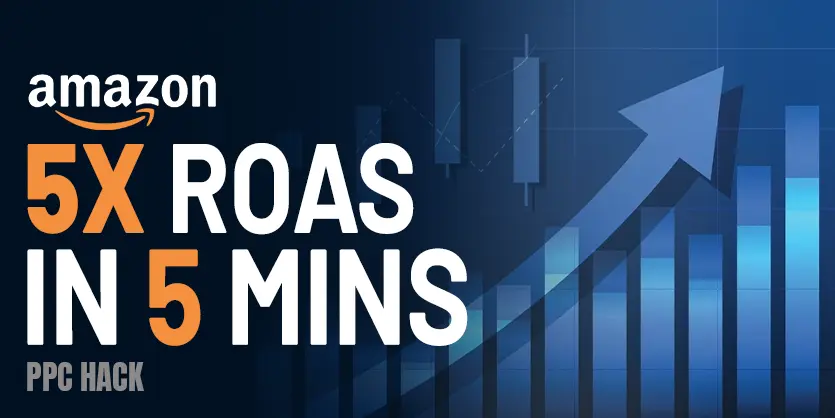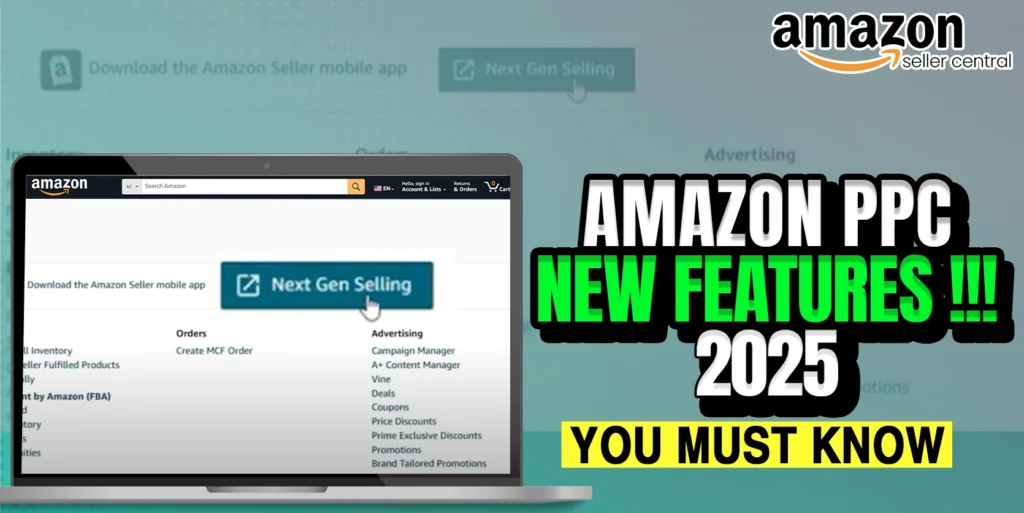Have you ever wondered if it’s possible to significantly improve your Amazon PPC campaigns in just 5 minutes? Managing PPC campaigns can be time-consuming, which is why optimizing your Amazon ad campaigns efficiently is essential. Let’s elaborate on how you can streamline your Amazon PPC campaigns most effectively.
In this blog, we’ll see actionable strategies to help you optimize your Amazon PPC campaigns efficiently. Whether you’re new to Amazon advertising or looking to improve your current strategy, these tips will guide you toward maximizing your ROI in a short time.
When it comes to maximizing your return on ad spend (ROAS) on Amazon, a well-planned PPC strategy is mandatory. The ability to scale and optimize your campaigns efficiently can make a significant difference in your overall sales performance and profitability.
Understanding Amazon Campaigns Optimization Goals
Before diving into optimization, it’s mandatory to understand your objectives. Are you optimizing for profit or scaling to increase visibility? Your actions will vary based on your goals.
- Scaling for Visibility: Expand keyword targeting, increase budget gradually, launch new campaigns, and optimize bids for top placements.
- Optimizing for Profit: Focus on cost-effective keywords, budget allocation, negative keywords, and bid management.
Strike a balance between profit and visibility by monitoring performance and adjusting strategies accordingly. Clear goals ensure effective use of resources and drive campaign success.
1. Scaling Amazon PPC Campaigns
Scaling your campaigns involves expanding your reach and increasing your visibility to drive more traffic and sales. Here are some key actions you can take to scale your Amazon PPC campaigns:
I. Increasing Amazon PPC Targeting Bids
Increasing your bids for high-performing keywords is a strategic way to increase your ad’s position and visibility. If you wish to boost bids across all campaigns efficiently, you can do so with just a few clicks by navigating to the Targets Tab. To identify active, well-performing keywords and targets, apply filters such as:
- Targets active status: Go to the Targeting tab and filter targeting by active status enable
- Sales greater than zero: Define the sales amount that signifies good performance for your product.
- ACoS: Specify an ACoS number that aligns with your desired profitability and willingness to invest more for improved results.
Once you have gathered data based on these metrics, sort by Spend amount from highest to lowest by clicking on the Spend metric. Select all the profitable targets and utilize bulk actions to adjust the bid rate for all simultaneously. This streamlined approach saves time and ensures that your bids are optimized for maximum impact across your campaigns.
II. Increasing Campaigns Budget
If your campaigns are consistently running out of budget, consider increasing your daily budget. This allows your ads to stay visible throughout the day and reach a larger audience. Monitor your campaign performance to ensure your investment is yielding the desired returns.
To increase your budget, head to the ‘Budget tab’ and select your preferred date range, such as the past 7 days. Customize the metrics to thoroughly analyze your campaign’s budget status. Begin by examining key metrics, such as:
- Average time within budget: Assess the percentage of time your campaigns stayed within their allocated budget.
- Estimated sales loss: Determine the potential sales you could have garnered if additional budget had been available.
- Current budget: Review the current budget amount to ascertain your desired investment level.
- ROAS: Filter ROAS data to pinpoint campaigns that generate the most favorable outcomes.
Identify all the campaigns that exceeded their budget during the specified timeframe. Calculate the estimated sales missed due to budget constraints. Select campaigns that demonstrated strong ROAS despite exceeding budget limits. Utilize bulk actions to increase the budget for these high-performing campaigns. This ensures they have adequate resources to maintain their success.
III. Increasing Bid by Placement
To boost the impact of high-performing campaigns, use placement percentages to strategically increase bids. Instead of manually adjusting keyword bids, set placement percentages based on campaigns with low ACoS (indicating strong performance).
Start with conservative figures like 25-100% and adjust based on results. This gradual approach optimizes visibility and helps maintain top positions on the first page for continued success.
IV. Launching New Campaigns
Expand your product reach by launching new campaigns with different targeting and methods. You can run different campaigns type like:
- Sponsored Brands: Showcase all your products with video ads to drive traffic to your brand store or product page.
- Sponsored Display: Target potential customers with ads tailored to high-conversion audiences interested in your products.
- Sponsored Products: Utilize various campaign types like Auto, Keyword Match, and Product-Targeted to capture every opportunity and maximize visibility.
Expanding your ad strategy with new campaigns can help your business grow. Use Sponsored Brands to show off your products, target potential buyers with Sponsored Display, and boost visibility with Sponsored Products using various campaign types.
2. Optimizing Your Amazon PPC Campaign
So till now we have discussed on Scaling part, lets move forward now with optimization part
Optimization focuses on refining your campaigns to improve efficiency and increase ROAS. Here are some actionable steps to optimize your Amazon PPC campaigns:
I. Lower Bids
Lowering bids for underperforming keywords can help reduce your costs and improve your ROAS.To identify those keywords
II. Add Negative Keywords
Adding negative keywords helps prevent your ads from showing up for irrelevant search terms. This strategy improves the quality of your traffic and ensures you’re reaching the right audience. Regularly review search term reports and add irrelevant terms as negative keywords.
III. Lowering Bid by Placement
Just as you can increase bids by placement, you can also lower them if certain placements aren’t performing well. Adjust your bids by placement based on performance data to allocate your budget more efficiently.
IV. Turn Off Keywords
If certain keywords are not delivering the desired results, consider turning them off. By eliminating underperforming keywords, you can allocate your budget more effectively to those that drive better outcomes.
V. Search Term Optimization
Lastly, optimize your search terms to identify profitable and non-profitable terms.
- Run Search Term Report: Go to “Measurement and Reporting” and select “Sponsored Ads Report.”
- Download and Analyze: Download the report and filter to identify profitable and non-profitable search terms by considering clicks, CTR, spend, and sales as well.
- Add or Exclude Keywords: Use profitable search terms as new keywords and add non-profitable terms as negative keywords.
This is how you can get more potential traffic and can reach out to your item in a wide range.
Advantages of Amazon PPC Campaign Optimization
Optimizing your Amazon PPC campaigns can offer a big boost to your sales and visibility. By targeting the right keywords and managing your bids effectively, your products get more exposure in Amazon’s search results. This increased visibility can lead to more clicks and higher sales.
Another advantage is cost-efficiency. When you optimize your campaigns to lower your Advertising Cost of Sale (ACoS), you get better value for your advertising spend. This means you’re not only driving more sales but also improving your profit margins.
Optimized campaigns also help build brand awareness. Sponsored Brands campaigns allow you to showcase your products and promote your brand, making it easier for shoppers to recognize and trust your brand on Amazon.
Insights
Optimizing your Amazon PPC campaigns doesn’t have to be time-consuming. By incorporating these quick strategies into your daily routine, you can efficiently scale and optimize your campaigns in just five minutes. These actions can lead to improved ROAS and better overall sales performance. By implementing these optimization strategies and Amazon PPC guide, you can expand the effectiveness of your Amazon PPC campaigns, drive more qualified traffic to your product listings, and ultimately increase sales and profitability.
Keep experimenting, stay adaptable, and watch your business thrive. Happy selling!
If you need any help with Amazon PPC guide for advertising strategy, you can contact us via email at info@ecomclips.com with this blog reference. You can also check out Our Website, www.ecomclips.com to get useful blogs that may help out your business a lot. Our team can provide you with the best solution of all time.



